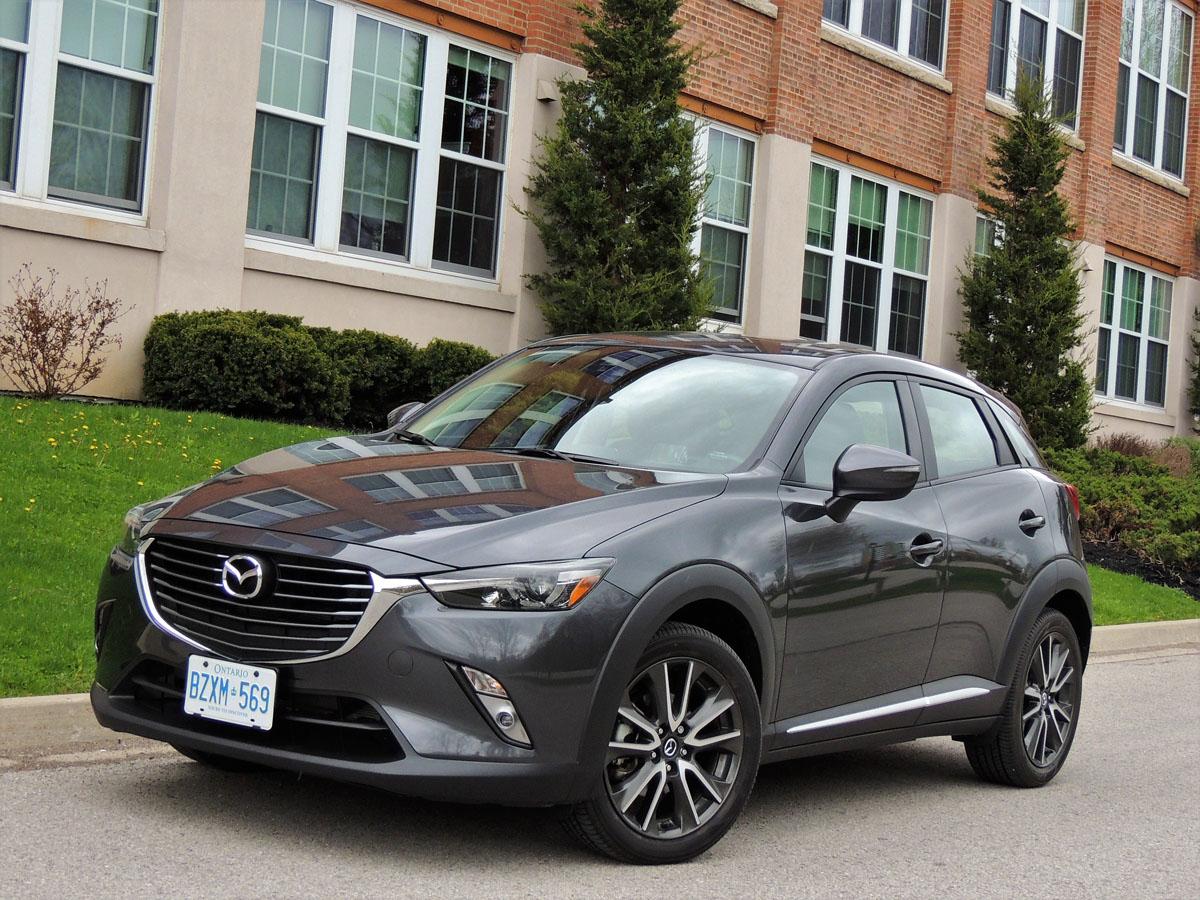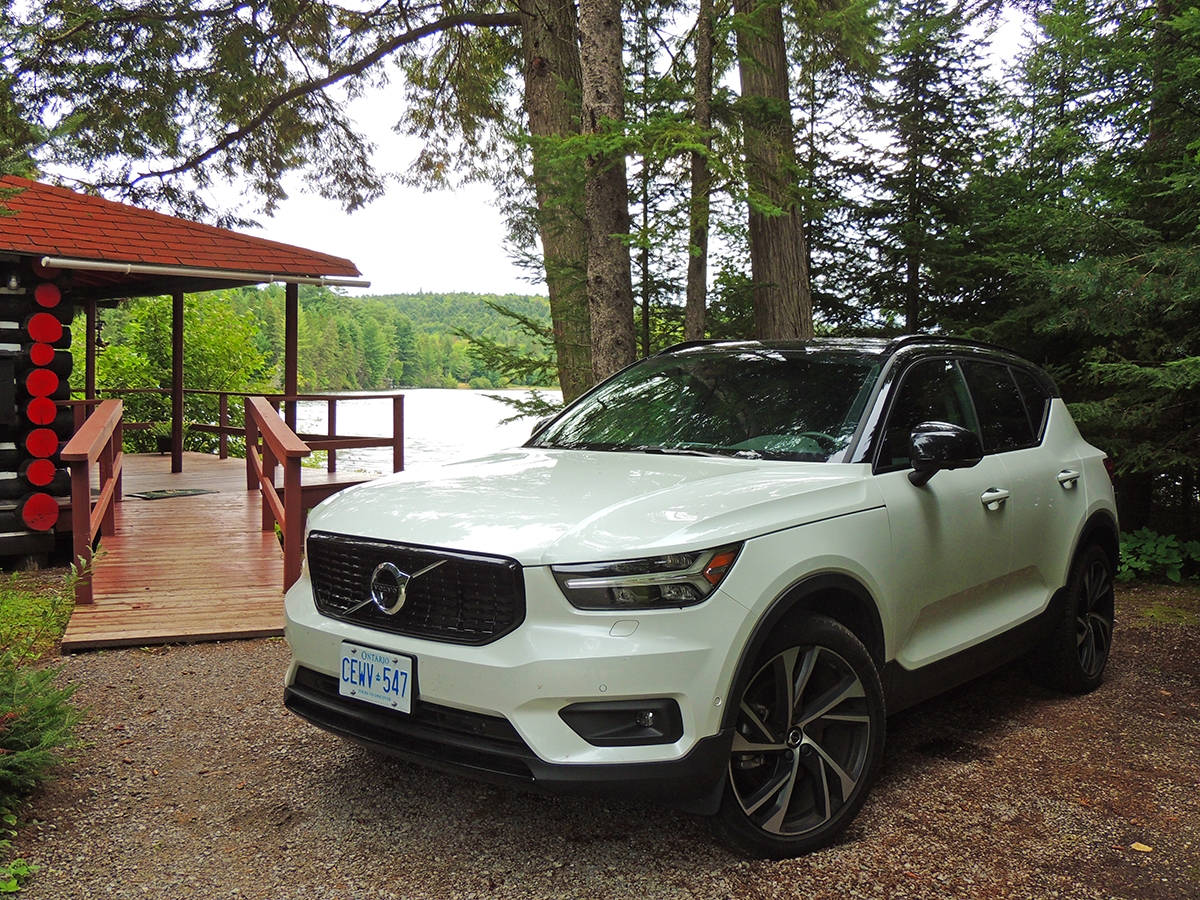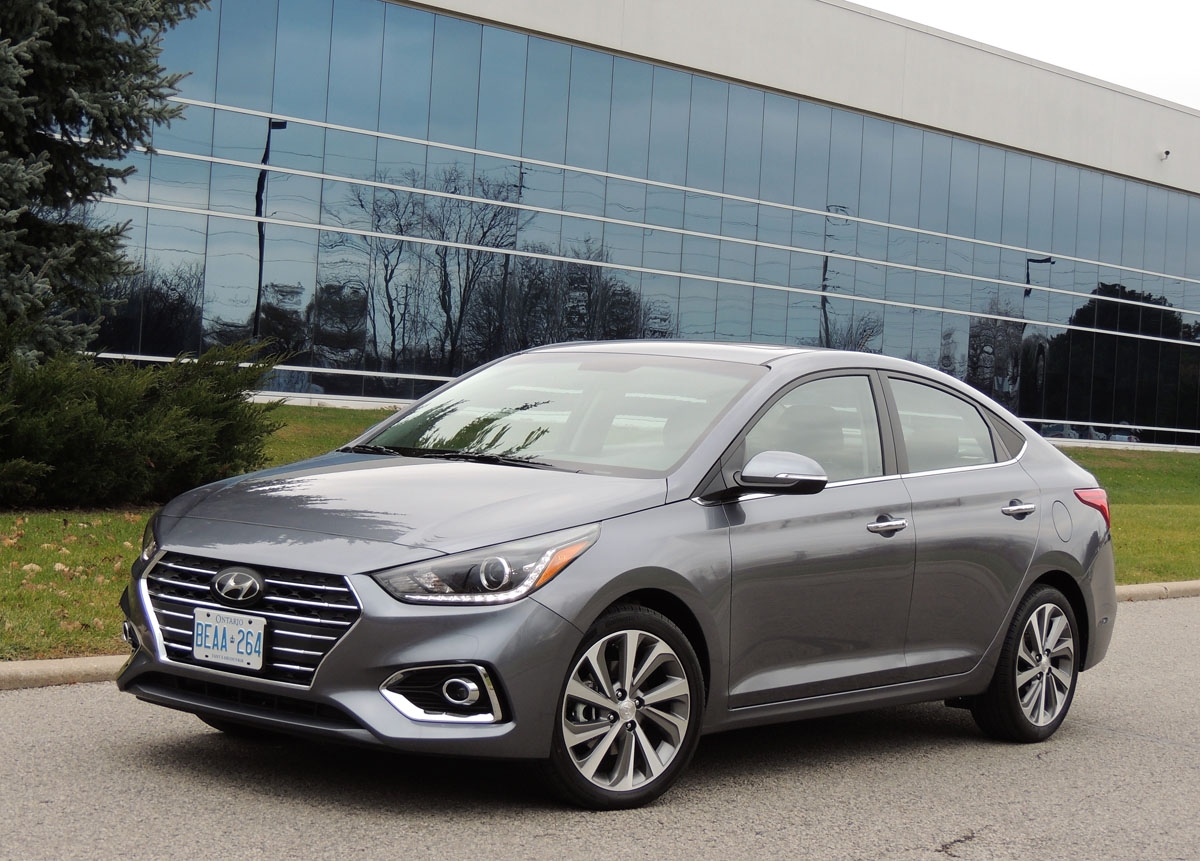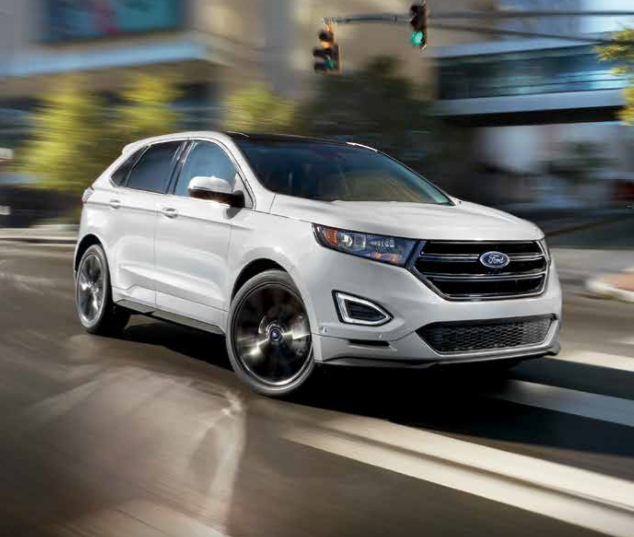
Is CX-3 a better choice than Mazda’s top-selling hatchback?
Photos by Neil Moore / Feature image: With its long hood, bobbed rear end and sleek profile, the CX-3 looks a lot like the Mazda3 Sport. But it rides higher and offers AWD.
You’d be excused for thinking that Mazda CX-3 looks a lot like their top-selling Mazda3 hatchback – otherwise known as the “Sport.”
They share the same proportions: long hood, short overhangs, wide track, tapered cabin, and roofline that slopes towards a bobbed rear end. Where they differ most is ride height, which should be no surprise as the taller CX-3 is a crossover.
More specifically, a compact crossover. Which is still a relatively small segment, where CX-3 is now in its second model year and up against competitors like Honda HR-V, Chevy Trax and the quirkier Nissan Juke. Unlike the latter, however, Mazda’s entry borrows heavily from an already successful model.
That being said, it isn’t a jacked up version of the Mazda3. It doesn’t even use the same platform, instead being built upon the Mazda2 chassis, making it a little smaller in length, width and cargo room (452 litres vs 574). Although when you drop the rear seats, CX-3 provides a generous 1,528 litres versus Mazda 3’s 1,334.
Indeed, comparisons between both vehicles are inevitable, and it appears a tight race until you consider the availability of all-wheel-drive. Having to endure nearly six months of crappy weather, Canadians love their AWD vehicles, which is why sales of SUVs, trucks and crossovers long ago surpassed cars. And there’s no sign of this trend slowing down.
The CX-3 fits Mazda’s i-Activ AWD as standard in its top-trim GT models ($28,995), and it’s a $2,000 option on base GX and mid-trim GS models. i-Activ monitors driver inputs like acceleration, steering and brake pressure, along with temperature, wipers, and torque to determine whether it’s raining or snowing, if you’re on a hill or turning. All to predict possible slippage.
Then it reacts by sending just enough torque to the rear wheels – no more, no less. i-Activ AWD isn’t about delivering a sportscar-like experience, its about providing traction without hammering fuel economy.
Which for the CX-3 is pretty thrifty. NRCan ratings for my AWD GT tester are 8.8/7.5 litres/100 km (city/hwy) and slightly better for FWD models (8.2/6.9 litres/100 km).

Credit can largely be given to the automaker’s 2.0-litre SkyActiv direct-injection four cylinder. This engine is also found in other Mazda products (Mazda3, CX-5), and in the CX-3 it produces 146 hp and 146 lb/ft of torque.
This won’t light up the asphalt, but acceleration is lively enough. Especially when in ‘sport’ mode and using the six-speed automatic’s manual shift. Peak torque kicks in at 2,800 rpm, which isn’t bad for a naturally-aspirated engine, and the zero-60 sprint should take just over eight seconds.
But surprisingly, there’s no manual option. I say ‘surprisingly’ because they offer it in the larger CX-5, which you’d presume would be less sporty and more of a grocery-getter.

They also offer it in all Mazda3 Sport models – along with a more potent 2.5-litre four cylinder (184 hp, 185 lb/ft of torque). It’s a combination that might put the hatchback higher on the shopping list for gearheads like me. My wife, however, would roll her eyes at any suggestion that 38 more horses and a third pedal is a reasonable swap for the CX-3’s AWD system.
Inside, the CX-3 could easily be mistaken for a Euro sports sedan. My GT tester received full marks for its two-toned interior with double-stitched red door trim and matching kneepads, and seats upholstered in black leather with Lux Suede inserts.
There’s still more soft-touch with red contrast stitching, along with aluminum, satin chrome and faux carbon fibre finishes. All panels and trim fit snugly, with no rattles or squeaks on rough roads.
From a driver’s standpoint, the raised vantage point is a plus, and decent rear and side visibility are complemented by a standard-equipped rearview camera. There’s loads of seat travel, and all models get six-way manual adjust for the driver, four way for the front passenger.
Base GX vehicles ($20,695 with FWD, $22,695 with AWD) come well equipped with air, pushbutton start, tilt/telescopic steering with audio, phone and cruise controls, and seven-inch, tablet-style touchscreen with Mazda Connect infotainment.
Its rotary controller sits just ahead of the drop-down centre armrest, which should have been lowered another inch or two for a less awkward reach. Nonetheless, its mouse-like operation is simple and intuitive.
Mid-trim GS models (FWD $22,695, AWD $24,695) add 16-inch alloys instead of steel wheels, along with automatic headlights, rain sensing wipers and heated front seats.
GT trim gets all of the above, plus moonroof, big 18-inch alloys with gunmetal finish, adaptive lighting, automatic climate control, leather, navigation, seven-speaker Bose audio, and a heads-up display.
The Technology Package ($1,500) adds the i-ACTIVSENSE safety suite: lane-departure warning, rear cross-traffic alert, Smart City Brake Support, and blind spot monitoring.
It makes a statement when a vehicle wins AJAC’s 2016 “Canadian Utility of the Year” and “Green Utility of the Year” right off the starting line. For the CX-3, it isn’t so much about Mazda blowing away buyers with any one feature, but a combination of many things done right.
Which bodes well for Mazda as urban dwellers who don’t need a ton of space, but want the increased ride height and AWD, continue to grow this budding segment.

SNAPSHOT: 2017 Mazda CX-3
BODY STYLE: subcompact crossover
ENGINE: DOHC 16-valve 2.0-litre four cylinder (146 hp, 146 lb/ft of torque)
TRANSMISSION: 6-speed automatic with manual shift mode
FUEL ECONOMY: FWD 8.2/6.9 litres/100 km (city/hwy); AWD 8.8/7.5 litres/100 km (city/hwy)
CARGO: 452 litres with seats up, 1,528 litres with seats folded
PRICING: Base GX (FWD) $20,695, (AWD) $22,695; GS (FWD) $22,695 (AWD) $24,695; GT (AWD) $28,995, (with Luxury Pkg) $30,495; Additional packages, options, freight and taxes extra
WEBSITE: mazda.ca








